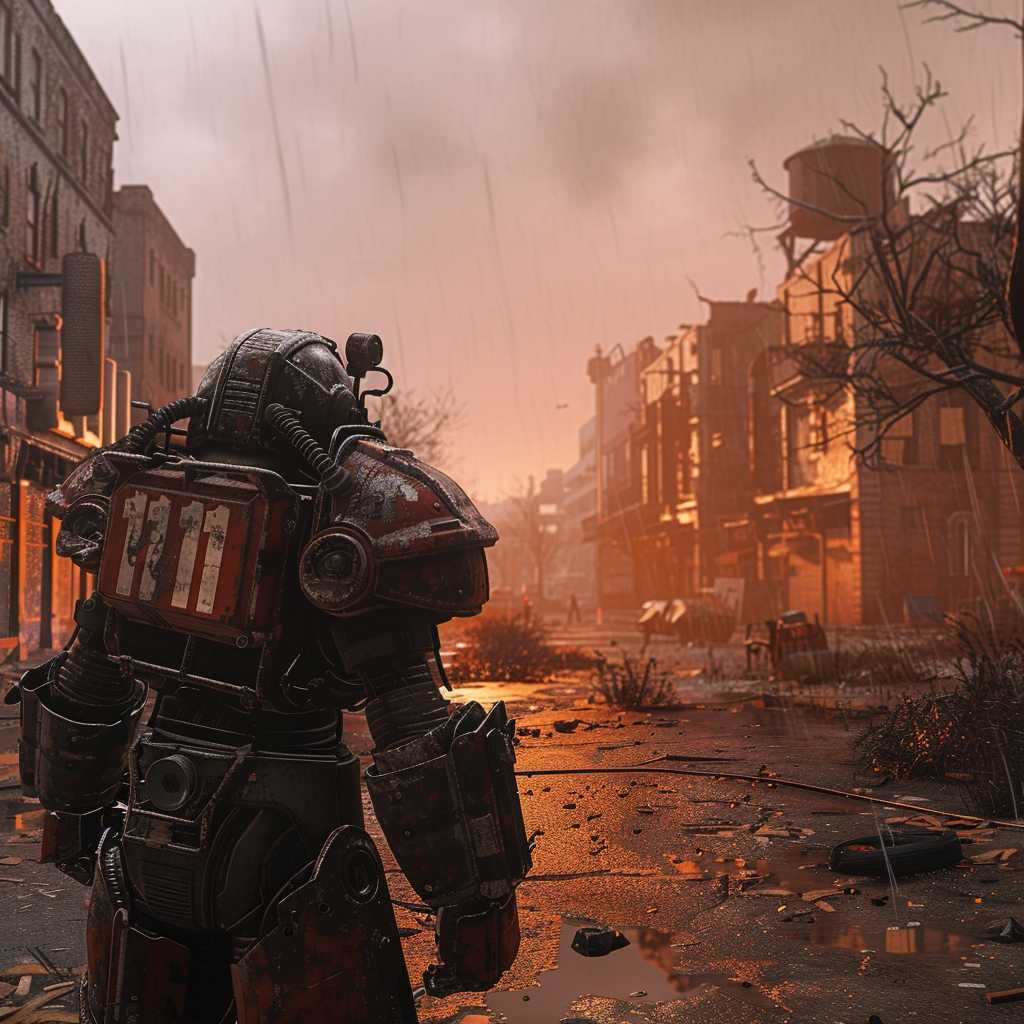The Comprehensive Overview of Fallout 4: A Post-Apocalyptic RPG Experience
Fallout 4 is a seminal open-world role-playing game (RPG) set in a post-apocalyptic environment, developed by Bethesda Game Studios and published by Bethesda Softworks. As the fourth major installment in the Fallout series, the game represents a continuation and evolution of its predecessors’ focus on exploration, story, player choice, and complex world-building. Set in a world ravaged by nuclear war, Fallout 4 invites players into a richly detailed and hazardous landscape known as the Commonwealth, which is based on the American region of New England.
Development History and Release of Fallout 4
Game Mechanics and Features
In Fallout 4, players step into the shoes of the “Sole Survivor,” emerging from an underground bunker known as Vault 111 into a harsh and transformed world. The game’s mechanics emphasize player freedom, with an expansive and reactive world to explore.
Combat in Fallout 4 is dynamic and can be approached in real-time or through a more strategic pause-based system called V.A.T.S. (Vault-Tec Assisted Targeting System), which allows for precise targeting of enemy weak points. Players can wield a vast array of weaponry, ranging from firearms and explosives to unconventional melee weapons.
Crafting is another significant feature that allows the customization of weapons and armor, as well as the building and managing of settlements. Players collect resources throughout their adventures that can be utilized to construct buildings, defenses, and other settlement infrastructures.
Narrative and Setting
The narrative of Fallout 4 revolves around the Sole Survivor’s search for their kidnapped son in a land scarred by nuclear devastation 210 years earlier, following the Great War. As players unravel the story, they encounter various factions vying for control, including the remnants of the U.S. government known as the Enclave, the mysterious Institute known for its advanced technology and androids called synths, as well as other groups like the Minutemen and the Railroad.
Graphics, Sound Design, and Beyond
Graphically, Fallout 4 marked a significant improvement over its predecessor. Enhanced textures, lighting effects, and character animations lend greater realism to the gaming experience.
The ambiance is further bolstered by an evocative sound design that utilizes a dramatic score interspersed with period-appropriate music selections from before the Great War. The use of sound helps anchor players in the game’s alternate history while interjecting moments of poignancy amidst desolation.
Reception and Legacy
Upon its release on November 10th, 2015, Fallout 4 received widespread acclaim for its depth and versatility. Critics praised its vast open world, detailed quests, complex characters, and player agency’s impacts on both gameplay and story. However, it also faced criticisms for technical issues such as bugs and performance glitches.
Expansions Tailored for Extended Play
An array of post-launch downloadable content (DLC) furthered the experience for players through expansions like “Far Harbor,” “Nuka-World,” “Automatron,” and several others focusing on additional missions, areas to explore, in-game items, and settlement options.
Virtual Reality: Bringing the Wasteland Closer
In a bold step toward immersive multimedia experiences, Fallout 4 VR was released in December 2017 offering players a virtual reality perspective on this extensive world, changing not only how they could interact with the environment but also how they could physically engage with its elements.
Mods: A Flourishing Creative Ecosystem
The modding community received official support from Bethesda with the introduction of Fallout 4’s Creation Kit. With these tools at their disposal, players have created thousands of mods that range from graphical enhancements to full-fledged new narratives ensuring that Fallout 4 continually evolves even years after its release.
Notes
Image description: A desolate cityscape from Fallout 4 with dilapidated buildings under a heavy sky smeared by hues of orange and grey. In the foreground stands a character wearing an iconic vault suit emblazoned with the number ‘111’, wielding an improvised weapon with mechanical parts cobbled together. The scene captures both desolation and determination synonymous with Fallout’s thematic focus.
